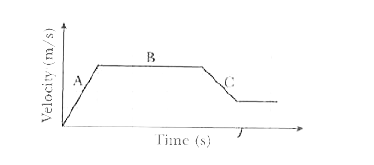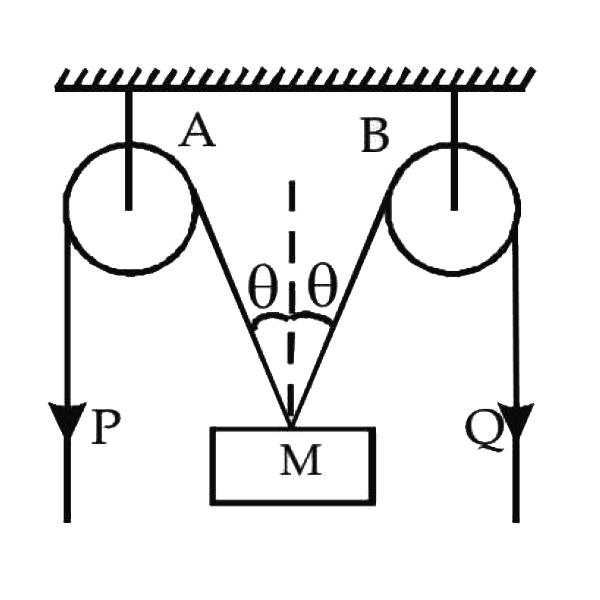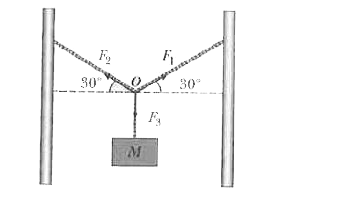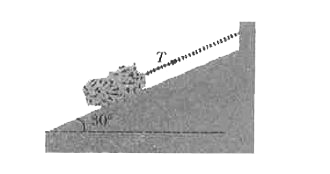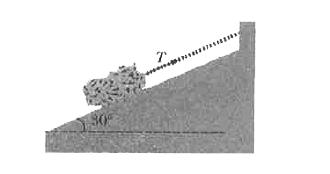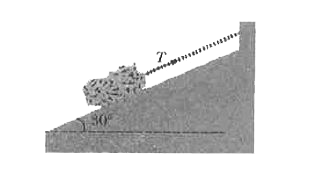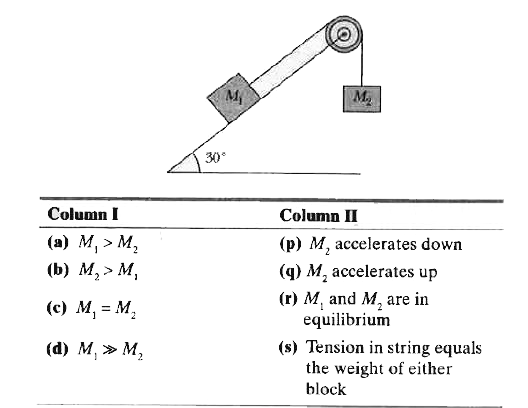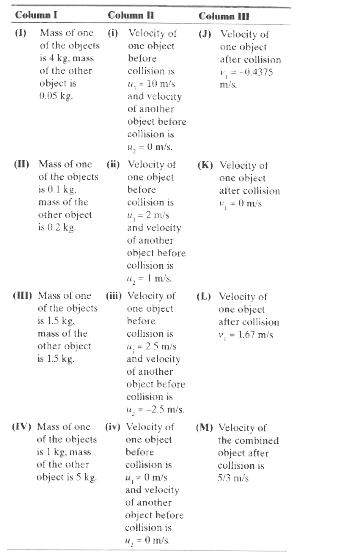PRACTICE QUESTIONS (Linked Comprehension) from RESNICK AND HALLIDAY PHYSICS (HINGLISH) FORCE AND MOTION - I for Class 12
| Class 12 | PHYSICS |
| Chapter | FORCE AND MOTION - I |
| RESNICK AND HALLIDAY PHYSICS (HINGLISH) | PRACTICE QUESTIONS (Linked Comprehension) |
| Medium | English |
| Academic Year | 2023-2024 |
Question 4
Sixteen beads in a string are placed on a smooth inclined plane to inclination θ=sin−1(1/3) such that some of them lie along the incline whereas the rest hang over the top of the plane. If N beads lie along inclined plane then the acceleration of the bead just below vertiex is g/2. Value of N is
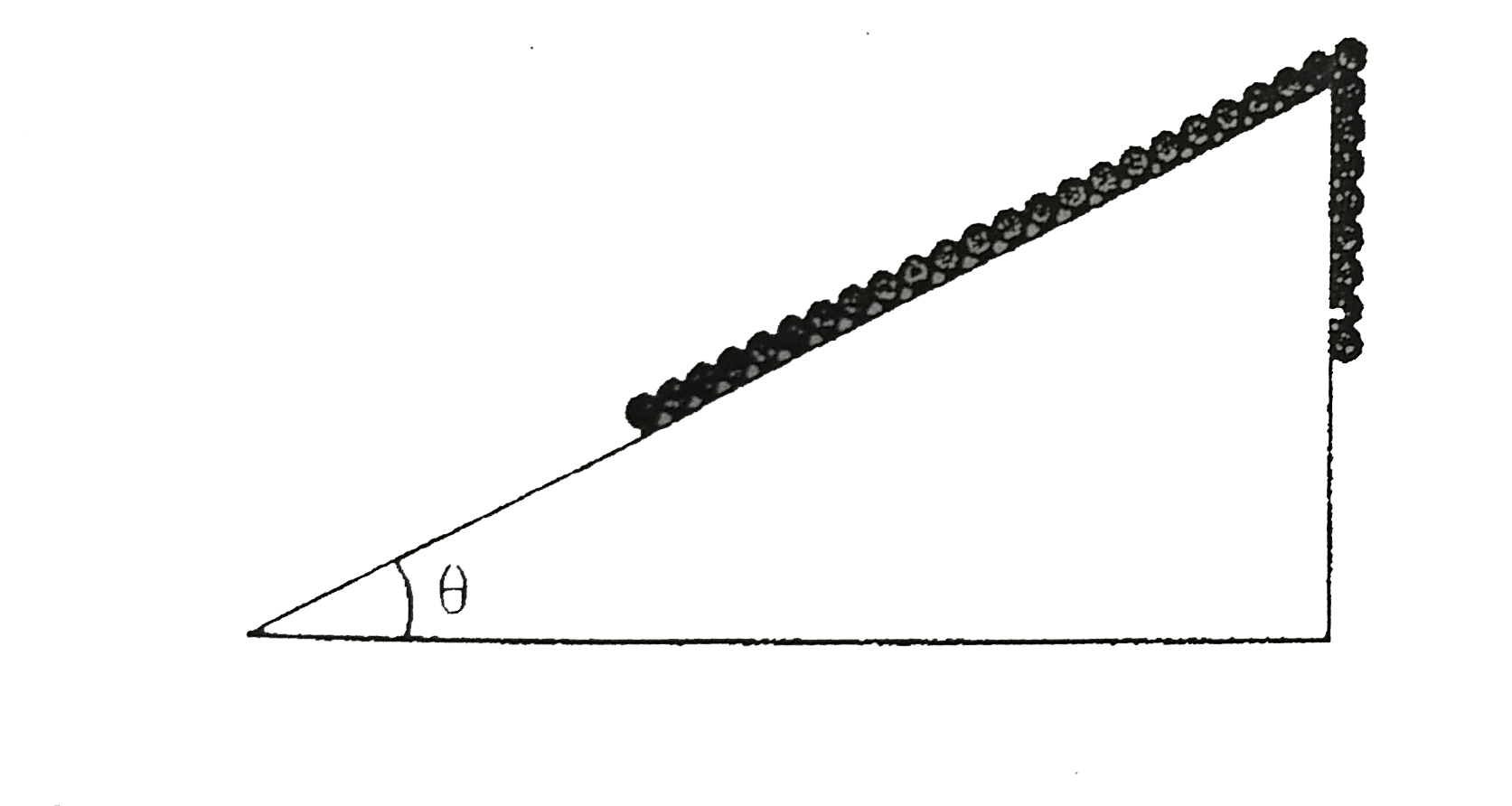 View Solution
View SolutionQuestion 9
A paraglider is flying horizontally at a constant speed. Assume that only two forces act on it in the vertical direction, its weight and a vertical lift force exerted on its wings by the air. The lift force has a magnitude of 1800 N. If the lift force should suddenly decrease to 1200 N, what would be the vertical acceleration of the glider? For question, take the upward direction to be the +y direction. View SolutionQuestion 13
A bead of mass m moves on a rod without friction. Initially the bead is at the middle of the rod and the rod moves translationally in a vertical plane with an acceleration a0 in a direction forming angle θ with the horizontal as shown in the given figure. The acceleration of bead with respect to rod is
 View Solution
View SolutionQuestion 19
The helicopter in the drawing is moving horizontally to the right at a constant velocity. The weight of the helicopter is W = 53 800 N. The lift force →L generated by the rotating blade makes an angle of 21.0∘ with respect to the vertical as shown in the following figure. What is the magnitude of the lift force ?
 View Solution
View SolutionQuestion 24
On earth, two parts of a space probe weigh 11 000 N and 3400 N. These parts are separated by a center-to-center distance of 12 m and may be treated as uniform spherical objects. Find the magnitude of the gravitational force that each part exerts on the other out in space, far from any other objects. View SolutionQuestion 25
A certain crane can provide a maximum lifting force 2500 N. It hoists a 2000 kg load starting at ground level by applying the maximum force for a 2 second interval, then, it applies just sufficient force to keep the load moving upward at constant speed. Approximately how long does it take to raise the load from ground level to a height of 30 m ?View SolutionQuestion 28
A car is towing a boat on a trailer. The driver starts from rest and accelerates to a velocity of +11 m/s in a time of 28 s. The combined mass of the boat and trailer is 410 kg. The frictional force acting on the trailer can be ignored. What is the tension in the hitch that connects the trailer to the car ?View SolutionQuestion 29
A marble is dropped straight down from a distance h above the floor.
Let Fm = the magnitude of the gravitational force on the marble due to the Earth,
Fe = the magnitude of the gravitational force on the Earth due to the marble,
am = the magnitude of the acceleration of the marble toward the Earth,
ae = the magnitude of the acceleration of the Earth toward the marble.
Which set of conditions is true as the marble falls toward the earth? Neglect any effects of air resistance. View SolutionQuestion 32
A woman stands on a scale in a moving elevator. Her mass is 60.0 kg, and the combined mass of the elevator and scale is an additional 815 kg. Starting from rest, the elevator accelerates upward. During the acceleration, the hoisting cable applies a force of 9410 N. What does the scale read during the acceleration ?View SolutionQuestion 33
A mountain climber, in the process of crossing between two cliffs by a rope, pauses to rest. She weighs 535 N. As the drawing shows, she is closer to the left cliff than to the right cliff, with the result that the tensions in the left and right sides of the rope are not the same. Find the tensions in the rope to the left and to the right of the mountain climber (see given figure).
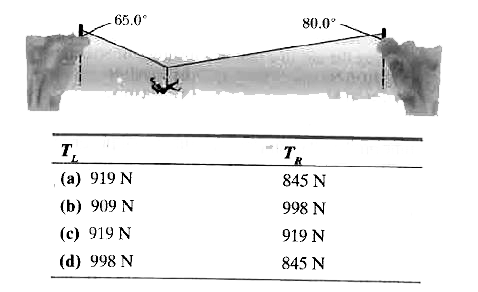 View Solution
View SolutionQuestion 34
As shown in the given figure, two blocks are connected by a rope that passes over a set of pulleys. One block has a weight of 412 N, and the other has a weight of 908 N. The rope and the pulleys are massless and there is no friction. What is the acceleration of the lighter block ?
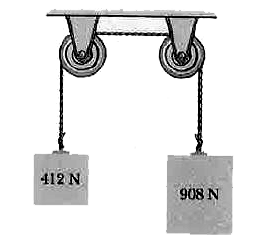 View Solution
View SolutionQuestion 36
When a parachute opens, the air exerts a large drag force on it. This upward force is initially greater than the weight of the sky diver and, thus, slows him down. Suppose the weight of the sky diver is 915 N and the drag force has a magnitude of 1027 N. The mass of the sky diver is 93.4 kg. What are the magnitude and direction of his acceleration ? View SolutionQuestion 38
A ball of mass m is attached to the lower end of a light vertical spring of force constant K. The upper end of the spring is fixed. The ball is released from rest with the spring at its normal ( unstretched ) length, and comed to rest again after descending through a distance x. View SolutionQuestion 42
A 2.0 kg object moves in a straight line on a horizontal frictionless surface. The graph in the given figure shows the velocity of the object as a function of time. The various equal time intervals are labeled using Roman numerals: I, II, III, IV, and V.
The net force on the object always acts along the line of motion of the object.

Which section of the graph corresponds to the application of the largest constant net force ? View SolutionQuestion 43
A 2.0 kg object moves in a straight line on a horizontal frictionless surface. The graph in the given figure shows the velocity of the object as a function of time. The various equal time intervals are labeled using Roman numerals: I, II, III, IV, and V.
The net force on the object always acts along the line of motion of the object.
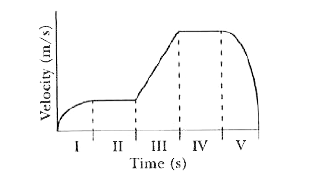
In which section of the graph is the magnitude of the net force decreasing ? View SolutionQuestion 44
A 2.0 kg object moves in a straight line on a horizontal frictionless surface. The graph in the given figure shows the velocity of the object as a function of time. The various equal time intervals are labeled using Roman numerals: I, II, III, IV, and V.
The net force on the object always acts along the line of motion of the object.
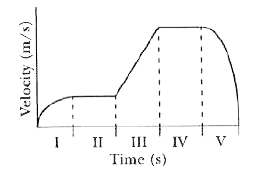
In which section(s) of the graph is the net force changing ? View SolutionQuestion 45
A 70.0 kg astronaut pushes to the left on a spacecraft with a force →F in "gravity-free" space. The spacecraft has a total mass of 1.0×104 kg. During the push, the astronaut accelerates to the right with an acceleration of 0.36 m/s2.
Which one of the following statements concerning this situation is true ?View SolutionQuestion 46
A 70.0 kg astronaut pushes to the left on a spacecraft with a force →F in "gravity-free" space. The spacecraft has a total mass of 1.0×104 kg. During the push, the astronaut accelerates to the right with an acceleration of 0.36 m/s2.
Determine the magnitude of the acceleration of the spacecraft. View SolutionQuestion 53
In each question, there is a table having 3 columns and 4 rows. Based on the table, there are 3 questions. Each question has 4 options (a), (b), ( c ) and (d), ONLY ONE of these four options in correct.
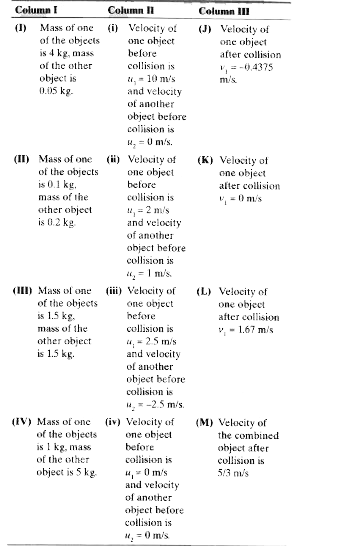
In which condition is the velocity of one of the objects after collision 35 m/s ? View SolutionQuestion 55
In each question, there is a table having 3 columns and 4 rows. Based on the table, there are 3 questions. Each question has 4 options (a), (b), ( c ) and (d), ONLY ONE of these four options in correct.
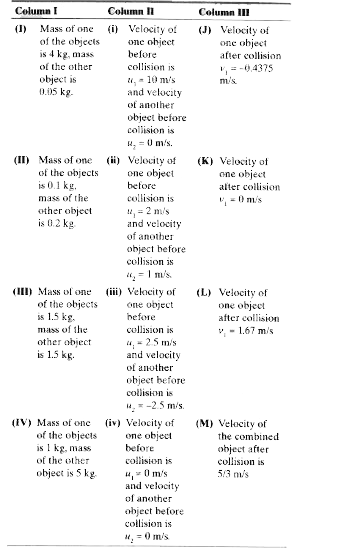
In which condition is the velocity of one of the objects after collision 1.165 m/s ? View SolutionQuestion 56
In the given table, Column I shows masses of the objects, Column II shows the initial and final velocity of the object after force is applied on it and Column III shows the time span for which force is applied on the object.
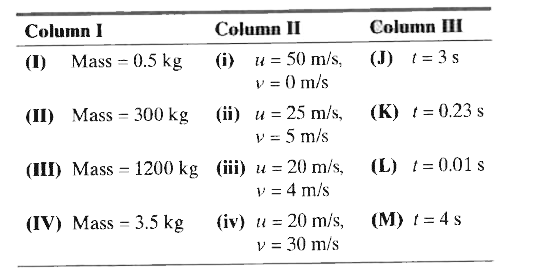
Conditions for a motorcar with the force of 6000 N applied in opposite direction of motion are : View SolutionQuestion 57
In the given table, Column I shows masses of the objects, Column II shows the initial and final velocity of the object after force is applied on it and Column III shows the time span for which force is applied on the object.
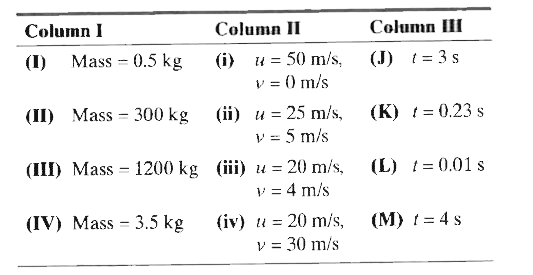
Conditions for a hammer with the force of 2500 N applied in opposite direction of motion are: View SolutionQuestion 58
In the given table, Column I shows masses of the objects, Column II shows the initial and final velocity of the object after force is applied on it and Column III shows the time span for which force is applied on the object.
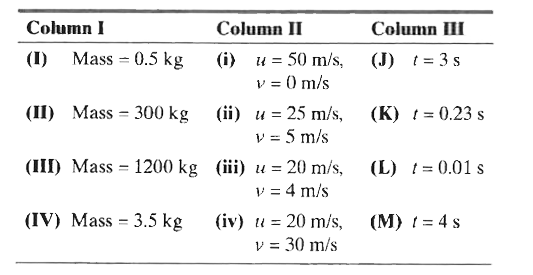
Conditions for a dumbbell with the force of 1000 N applied in same direction of motion are : View SolutionQuestion 60
Workers are loading equipment into a freight elevator at the top floor of a building. However, they overload the elevator and the worn cable snaps. The mass of the loaded elevator at the time of the accident is 1600 kg. As the elevator falls, the guide rails exert a constant retarding force of 3700 N on the elevator. At what speed does the elevator hit the bottom of the shaft 72 m below? View SolutionQuestion 61
Three blocks A, B and C of masses 5 kg, 10 kg and 15 kg respectively connected by two ideal strings are present on a smooth horizontal surface. An external horizontal force of 30 N acts on the block A to pull the system. Find the difference in the tensions in strings connecting A and B and, B and C. View Solution


